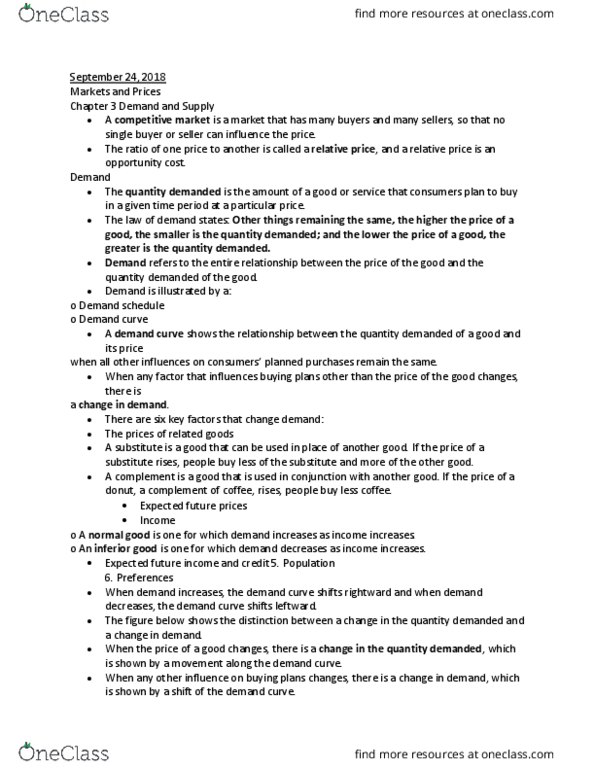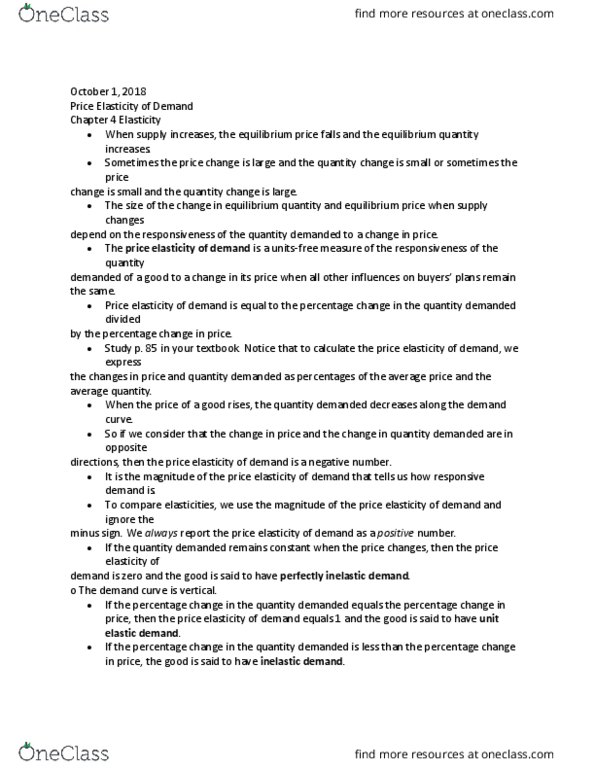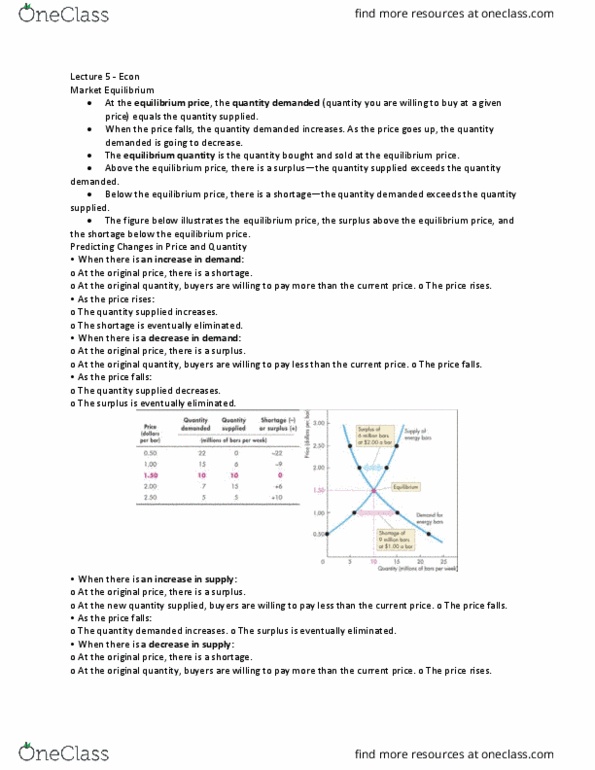Economics 1021A/B Lecture Notes - Lecture 4: Normal Good, Inferior Good, Economic Equilibrium
ECON 1021A/B verified notes
4/25View all
Document Summary
It is the magnitude of the price elasticity of demand that tells us how responsive demand is: to compare elasticities, we use the magnitude of the price elasticity of demand and ignore the minus sign. We always report the price elasticity of demand as a positive number. If the quantity demanded remains constant when the price changes, then the price elasticity of demand is zero and the good is said to have perfectly inelastic demand: the demand curve is vertical. If the percentage change in the quantity demanded equals the percentage change in price, then the price elasticity of demand equals 1 and the good is said to have unit elastic demand. If the percentage change in the quantity demanded is less than the percentage change in price, the good is said to have inelastic demand. If demand is elastic, an increase in price results in a larger percentage decrease in the quantity demanded and total revenue decreases.





